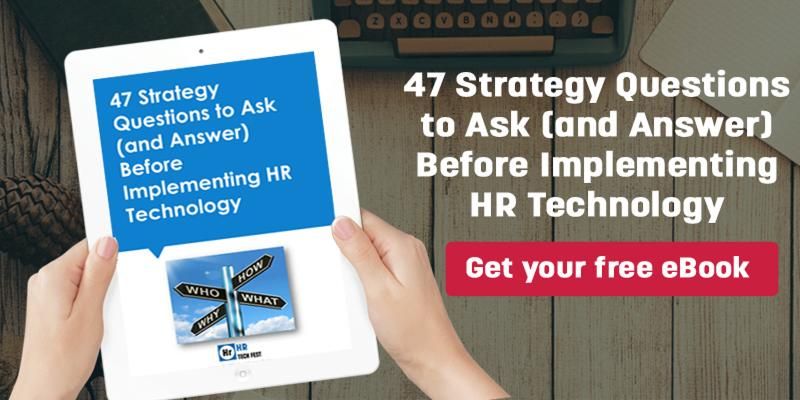5 Strategies for Building an Authentic Talent Community
)
Talent communities, talent networks, talent pools, call it what you will, there is little debate over the value of creating and nurturing a group of people with common interests. But not all talent communities are created equally. So what makes some communities thrive while others remain and strategy document in a desk drawer?
Erin Wilson has been building and nurturing some of the most successful talent communities for over nine years (in fact the talent community he set up at BrightRoll was so successful it became part of the $640 million acquisition deal with Yahoo). Ahead of his session at HR Tech Fest 2016, he explains the potential that talent communities have and provides some practical advice for nurturing them.
For me and my team, the idea of a Talent Community was simply to take the cultural values and experience from within a company and put that inside out so that we can transparently show the external talent community who we are and how we operate: how we make decisions, what it's really like to work at this company and in this environment, with these people. Then through a series of events, content and social media content, we interact with this community until their path and ours align, in terms of their careers and our business needs. Then it's a win-win all around.
While it may sound simple to execute in theory, building and sustaining authentic talent communities takes some time and nurturing. Here are five strategies that have really helped me and my team when on our journey of building talent communities.
1. Define the First Principles of Your Talent CommunityThe first thing you need to do is define what your talent community is to you and your company. And I think the best place to start is with your cultural values. From there, identify a team of influencers or a think tank (depending on the size of your company) that can engage the organisation. Whether that's a leadership team or up-and-coming leadership team, or you build it into your on-boarding process as a 30-day check-in, make sure you have a group of supporters who know what you're trying to achieve.
2. Craft Your Talent Community StoryIf I could have my time over setting up the talent community at BrightRoll, I would have established its identity sooner. A talent community was a bit of a new concept when we set it up and because we had a lack of strong vision around it early on, it became a catch-all bucket rather than a stand-alone project.
So what I'd advise is to talk about the value proposition of your talent community early and often. Let them know the purpose of the talent community team, what you're hoping to achieve, a little about how you're going to get there. At first it's hard to actually make the return on investment tangible, and so if you're going to your CFO and you're asking for a budget and you're saying, “Can I have X dollars to invest in my Talent Community? And by the way, don't ask me how much, why I'm going to spend it, what the cost savings is. I can't actually give you that number in return, yet. But I will one day, I promise.â€' I think that's a tough story to tell, but it starts with anecdotal evidence on the community. As soon as you get a whiff of a success story, you have to blow that trumpet.
3. Use Social Media to Share Your StoryTalent communities are really about taking your company or cultural values and then turning those values into a story, and what better pipe for telling that story than social media? I think that's a given as a minimum requirement for a talent community these days. If you want to go a step further, you can start to implement a paid presence on channels like LinkedIn to push your content. There are also smaller start-ups that are starting to sprout up that also can help you focus specifically on content.
4. Don't Underestimate the Power of Human InteractionThe other really effective way to nurture and build your talent community is through face-to-face events. You'd be surprised at the effect that a physical meet up with the community can have. Even opening up your doors to host or partner with other events, or just showing up as a team to different events can help grow your talent community. If you go out with the mission of supporting the community and simply being excited about who you are and what you're a part of, it shows.
One initiative we started at Yahoo was an event called Data Driven Women which brings together women (and men) passionate about building a stronger female tech community. We had quite a few female engineers at Yahoo who and so we wanted to provide a platform for them. The events are not only about discussing data, but rather from a data driven approach that allows us to bring metrics and measurement to different topics like innovation, entrepreneurship and technology. Every month(ish) we open up our doors at Yahoo to members of our community to meet, connect, eat, drink, and hear inspiring women leaders share their story.
We certainly made hires from these events. In fact we found that these events were the tipping point for many people who had applied for jobs in the past or been in touch with us over a couple months. After they had attended a Data Driven Women event and been able to meet some of our people and see where we choose to spend our time and our resources, they were jumping at the opportunity to work for us.
5. Constantly Redefine Your CommunityI think where a lot of talent communities fail is in re-inventing itself. Once the community is set up it's so easy to sit back assume it's going to work for you. But in order for your talent community to flourish, you need to keep some level of cadence around it. You need to be constantly redefining your talent community to make sure it's still in line with your company's values and the way the market is changing.
The other way to keep momentum going is to researching things like content marketing strategies – while it might not seem particularly relevant to talent professionals, the principles of content marketing can do wonders for your talent community. Remember you're marketing your talent community to the wide world so it makes sense to take a leaf out of your Marketing colleagues' book. In many ways they are your best friend – you're going to partner with them a tremendous amount, and you're going to do it at every level, from a strategic level as well as at a practical level.
Reflecting on our talent community at BrightRoll, I think it took us a while to get our efforts in line – we created an editorial calendar, but it took us a while to apply that same level of structure to all of the project-based work in our talent community. Once we did, it was eventually very helpful in making incremental improvements. The truth is a talent community is something you have to constantly invest in and that's something to keep in mind if you really want to see it grow.
About the Author
Erin Wilson is the former People Tech Innovation Lead at Yahoo. He has spearheaded some of the most innovative talent campaigns and was instrumental in the strategic up-scaling of BrightRoll for its acquisition by Yahoo. Equally addicted to learning and sharing, Erin is passionate about disseminating knowledge throughout the global HR Tech community.
.png)

